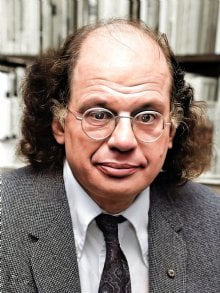Howl is a long-form poem that celebrates the freedom of expression and criticizes the repression of the era, using vivid language and imagery to portray the madness and chaos of postwar society. The poem is divided into three sections, with the first focusing on the emotional outbursts of disenfranchised people, the second invoking a destructive force, and the third providing solace to the suffering.
 Allen Ginsberg, a prolific poet born in 1926. Immerse yourself in his quotes on society and the American Dream.
Allen Ginsberg, a prolific poet born in 1926. Immerse yourself in his quotes on society and the American Dream.
More about Allen Ginsberg